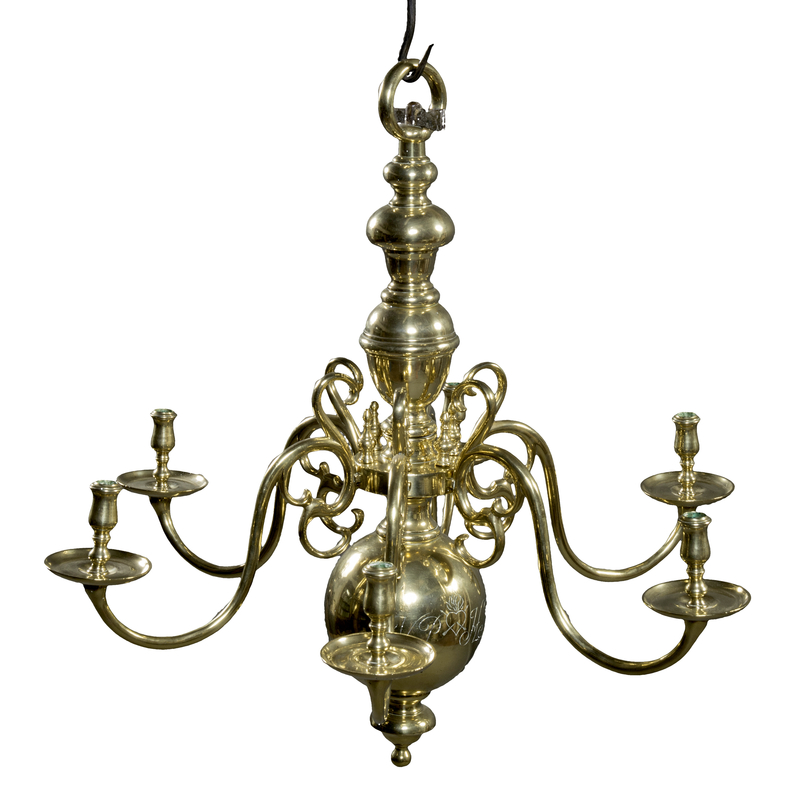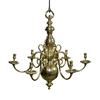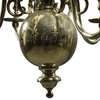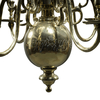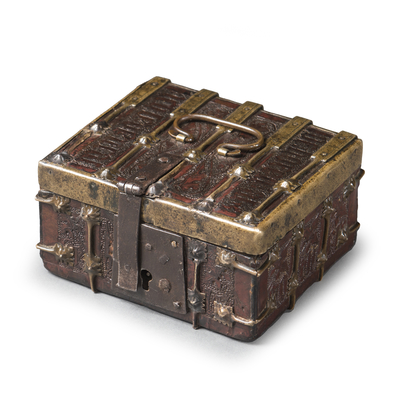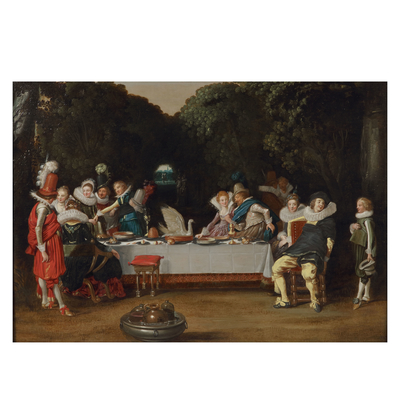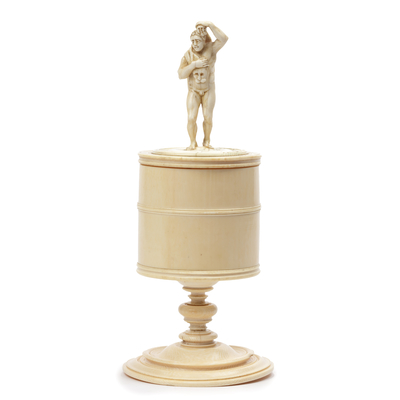Brass 'marriage' chandelier
Global shipping available
- Origin
- Northern Netherlands, probably Amsterdam
- Period
- 1689
- Material
- Brass, iron
- Literature
W. van Biemen, B. Linskens & A. de Groot (ed.), Koper in kerken, Leiden 2018, pp. 41 - 44.
O. ter Kuile, Koper & Brons, Den Haag 1986, pp. 134 - 141.
Questions about this object?
Please use one of the contact options below:
Description
A Dutch brass chandelier with eight branches arranged around a central stem, inscribed on the ball with 'VP' and 'HS'. Between the initials a burning heart with two arrows is engraved. The chandelier was probably made in honour of a wedding and the initials are those of the newlyweds. On the other side of the sphere is the date '1689'.
The chandelier consists of a wrought-iron stem with an iron pin, a brass hanging ring, various profiled stem elements, a ring, eight S-shaped branches with drip trays and candle holders, a ball and a droplet below. The section above the ring to which the branches are attached is a profiled element, that is alternately concave and convex and ends in a mushroom shape and a baluster. The ring has eight holes in which the branches are attached with a baluster-shaped and profiled peg. On the bases, the branches are decorated with three volutes, two of which curl downwards and one upwards. The deep, S-shaped branches end in wide dish-shaped drip trays that carry the candle holders. The drip trays have an upright edge and a recess towards the centre. The candle holders have a round, upwards tapering vase shape with protruding rim, on a baluster-shaped foot. Under the ring the sphere is attached, with a strongly profiled droplet.
This chandelier is a typical Dutch chandelier, with a large sphere at the bottom and S-shaped branches. The ball, weighted with clay or sand, keeps the chandelier in balance and makes sure that it hangs straight so that the candles burn evenly. The polished and shining ball also reflects the light of the candles on the, deeply downward bent, branches. This type of chandelier made its appearance around 1600 in churches, public buildings and the homes of wealthy citizens. As a result of the Revolt and economic tensions, many craftsmen, including brass workers, fled from the Southern Netherlands to the Northern Netherlands in the sixteenth century. The iconoclasm in 1566 and the takeover of a large number of Catholic churches by Protestants resulted in the loss of much copper work, and therefore in the seventeenth century there was an increasing demand for new copper work. The Republic, and Amsterdam in particular, became the centre of brass casting due to the available knowledge, craftsmen and orders. The chandeliers were cast using the sand casting method; wooden models were pressed in the sand, creating a mould for casting the chandelier. After casting, the cooled and rough object was finished on the lathe.
